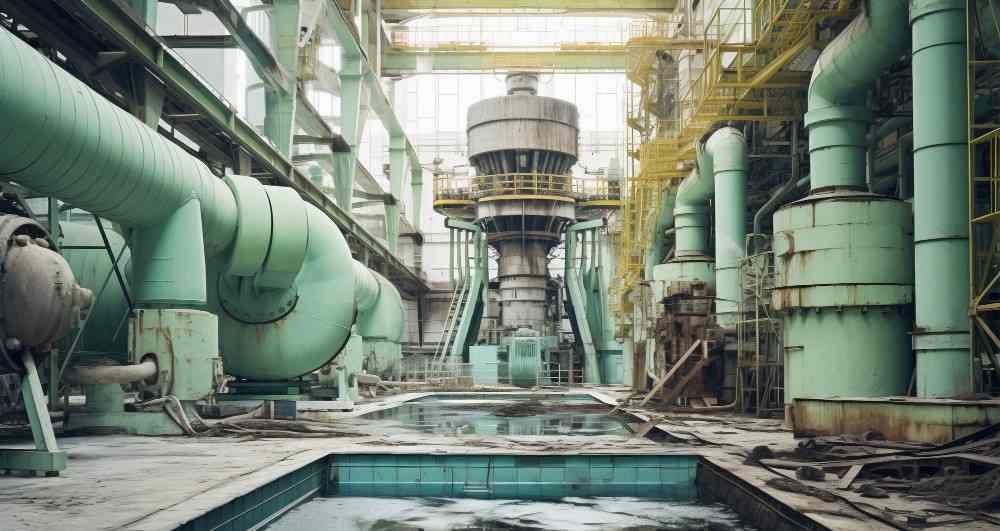In industries where equipment is exposed to highly aggressive conditions—mining, chemical processing, wastewater treatment—the cost of corrosion, chemical attack and physical wear can be enormous. Downtime, maintenance, and premature equipment failure all eat into profit margins. Fortunately, advances in material science have led to coatings that incorporate nanomaterials—offering a new level of protection against the harshest industrial challenges.
How Nanoadditive-Based Coatings Work
Nanoadditive-based coatings use raw materials that have structural components smaller than 100 nanometres (nm) in at least one dimension. To give you a sense of scale, one nanometre is one-billionth of a metre—about 100,000 times smaller than the width of a human hair.

As materials at this scale function differently from their conventional counterparts, they can provide much sought-after properties into bulk products. Some of the key characteristics of nanomaterials include:
· Size-dependent properties: At the nanoscale, materials may become stronger, lighter, more chemically reactive, or better at conducting electricity or heat.
· High surface area: Nanomaterials have a much greater surface area relative to their volume. This makes them ideal for use in coatings, catalysts, and sensors.
· Quantum effects: In very small nanoparticles (especially below ~10 nm), quantum mechanics can dominate, leading to unique optical, magnetic, or electrical properties.
These characteristics can now be applied to manufactured products. For example, when dispersed into an epoxy matrix, nanomaterials can dramatically enhance a coating’s abilities. As a result, a coating such as NANO CR Coating, a chemically resistant paint from NANO CHEMI GROUP (who sponsor this webpage), can provide long-lasting resistance to chemicals, moisture, and abrasive wear.
Available in 25 kg drums, the product has been lab tested to confirm its exceptional resistance to aggressive substances such as:
· Potassium hydroxide (KOH)
· Sodium hydroxide (NaOH)
· Sulphates and chlorides
· Phosphoric acid
· Sulphuric acid
Thanks to its nanostructure, the coating forms an impermeable, ultra-durable layer that adheres tightly to metal and concrete surfaces.

Without effective protection, metal components can begin to rust or corrode within weeks—sometimes days. Unplanned downtime, costly repairs, and frequent replacement cycles follow.
The secret to NANO CR Coating’s performance lies in the nanoparticles dispersed throughout the epoxy matrix. These particles dramatically improve:
· Chemical resistance: The dense nanostructure reduces porosity, preventing aggressive agents from reaching the surface beneath.
· Mechanical strength: Improved hardness and flexibility protects against chips, abrasion, and micro-cracks.
· Adhesion: The coating bonds securely to various substrates, reducing the risk of peeling or delamination.
Even in thin layers, the coating delivers long-lasting protection—ideal for large, high-wear surfaces like mining truck beds, conveyor systems, storage tanks, and piping.
Case Study: Protecting Phosphate Mining Equipment
Few industries present harsher conditions for machinery than mining. Whether extracting copper, phosphate, or coal, mining equipment is routinely exposed to:
· Corrosive saltwater or acidic tailings
· Abrasive dust and debris
· High-pressure washing and chemical exposure
· Mechanical impacts and vibrations
· Temperature extremes
In phosphate mining, for example, processing equipment frequently comes into contact with phosphoric acid and saline solutions. Over time, these substances corrode steel structures, cause leaks, and compromise safety.
When treated with a coating containing nanomaterial additives, key assets such as hauler truck beds, chemical storage tanks, pipes and joints, pump housings, and other (often expensive) equipment in and around the mine can be protected from the coating’s high-performance chemical barrier. This extends service life, reduces maintenance costs, and helps keep operations running smoothly with fewer stoppages.

Not only is applying NANO CR Coating straightforward, but it can be modified on request, so that the nanotechnology can be applied to other coatings. This means that clients are able to customise the formula to provide desired characteristics, such as specific protection against abrasion, acids, UV-light, alkalis, or saline solutions.
All of this contributes to lower lifecycle costs and improved environmental compliance.
Related articles: Polycarbonate 2.0: Nanotechnology Brings New Life to PC and Antistatic Epoxy Innovation for Safer, Smarter Warehouses
In harsh industries like mining, equipment downtime is expensive and preventable. NANO CR Coating offers an advanced solution that protects critical assets, extends service life, and boosts efficiency.
Whether you’re managing a fleet of mining trucks or a chemical processing facility, investing in nanotech coatings could significantly reduce maintenance budgets and unplanned outages.
To explore how NANO CR Coating can reduce your maintenance costs and increase asset lifespan, visit the NANO CHEMI GROUP product page or request a tailored sample today.
Photo credit: Wirestock on Freepik, NANO CHEMI GROUP, Freepik, & Freepik
